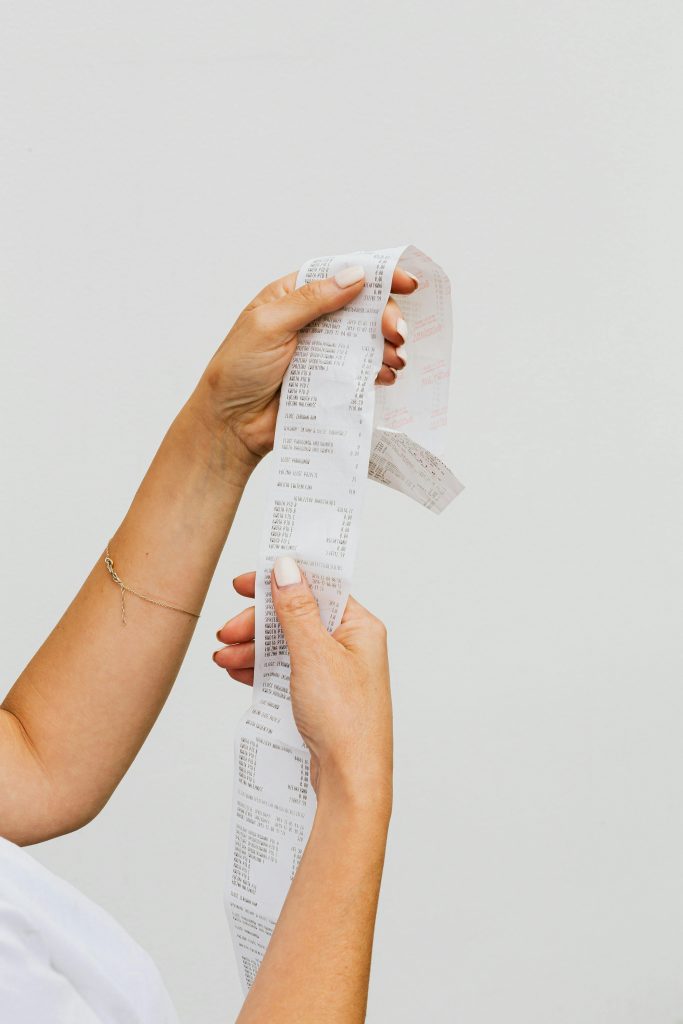In a world where consumers are flooded with information and products, personalisation for small brands is becoming increasingly important. But, keeping up with this trend can be a challenge. Nevertheless, personalisation can help small businesses stand out from the competition, build a stronger bond with their audience and increase sales.
This article explores the challenges small brands face with personalisation and offers successful examples and practical tips on how they can implement personalisation. We will also look into ways to measure personalisation effectiveness and what the future may look like.
Consumers today are faced with an overwhelming amount of information. Our attention span is now shorter than that of a goldfish, which makes it increasingly difficult to capture and maintain our interest.
Chances are, for example, that you won’t read this article all the way to the end. In fact, most readers only spend about 37 seconds on a blog article and only read about 60% of it.
And this is where personalisation comes in.
What Is Personalisation?
Personalisation is the tailoring of products, services and content to the individual interests, needs and behaviours of each customer.
Personalisation allows your business to create better customer experiences by focusing on customers’ needs and preferences.
By offering customised products, tailored content and personalised interactions, customers feel valued and unique. This leads to positive customer engagement and higher levels of customer satisfaction.
In fact, one study shows that 88% of consumers believe the customer experience is just as important as the actual product.
The Benefits of Personalisation for Small Brands
Personalisation offers many benefits for small brands. Personalised interactions can help businesses like yours stand out from the crowd in a world full of offers and information.
In fact, according to McKinsey, 71% of consumers expect businesses to offer personalised interactions. Brands that master personalisation generate an average of 40% more revenue in the process.
But it’s about more than just profit. Personalisation can also lead to higher customer satisfaction and loyalty, as products and content are tailored directly to their needs and preferences.
So personalisation is no longer just a “nice-to-have” for smaller brands, but an essential step to keep up with big companies.
From Products to Experiences: Personalisation Is Ubiquitous
Personalisation has become an integral part of marketing. It is happening all around us—through personalised products, content and experiences.
Personalised Products
Bespoke products and customised options, such as items embroidered with the customer’s name or available in custom colours, give consumers a sense of ownership and pride. It makes them feel valued and unique.
Here are some examples of personalised products:
- Personalised jewellery: Bracelets, necklaces or rings engraved with the customer’s initials, names or special dates, for example.
- Customised clothing: garments that are individually adapted to the customer’s body measurements and preferences.
- Personalised books: Books in which the name of the customer and their friends might be included in the story.
- Customised cosmetics:
- Cosmetic Products such as creams which are tailored to the customer’s individual needs.
Personalised Content
Personalised content makes customers feel understood and valued. It has even been proven that personalised emails lead to six times higher transaction rates than non-personalised emails.
Furthermore, product recommendations are responsible for up to 31% of an e-commerce website’s sales. So it’s no surprise that e-commerce websites increasingly rely on personalisation.
Below are some examples of personalised content:
- Personalised emails: email marketing campaigns where the content, offers or recommendations are tailored to the recipient’s individual interests and preferences.
- Personalised advertising: ads that are tailored to user behaviour, demographics or previous interactions with the company.
- Recommendations: Online platforms such as Amazon or Netflix which show personalised product recommendations based on the user’s previous behaviour and preferences.
- Personalised website content: Dynamic websites that display content and offers based on the individual characteristics of the visitor.
Personalised Experiences
Personalised experiences are another effective way to make customers feel special. By offering individual and customised experiences, companies can increase customer engagement and loyalty.
Here are some examples of what a personalised experience can look like:
- Interactive packaging: Packaging that offers an interactive component, such as QR codes that lead to personalised messages.
- Unique shopping experiences: Shops or online platforms that offer personalised advice and recommendations.
- Personalised events: events where attendees experience special activities or surprises tailored to their interests.
- Personalised fitness programmes: Gyms or apps that create personalised workout plans and nutrition recommendations to address users’ individual goals.
Examples of Brands That Nailed Personalisation
It’s inspiring to learn from brands that have already successfully implemented personalisation. These companies have found innovative ways to deliver personalised experiences to their customers and build a strong connection as a result.
Here are some examples of brands leading the way in personalisation that small brands can learn from:
- Prose offers customised hair care products based on the client’s hair type and environmental factors.
- Curology offers personalised skincare products and treatments through its online platform.
- Neutrogena’s Skin360 app also uses AI to create personalised skincare recommendations.
- Vitable provides personalised vitamins based on customers’ nutritional needs and goals.
- Fit My Foot creates customised insoles based on an image of a customer’s feet.
- Grammarly sends weekly individualised insights into the writing behaviour of its users.
- Headspace uses a quiz at sign-up to tailor the app’s content to the user.
- Coca-Cola allowed customers to write their name or a message on a can.
- Starbucks’ mobile app allows customers to personalise their drinks. The company also sends offers and rewards based on their purchase history.
- MTailor uses smartphone scans to create personalised clothing.
Very recommends clothes based on weather forecasts.
What challenges does personalisation bring for small brands?
Personalisation is without question a powerful tool. But for small brands, implementing personalisation still brings its own challenges.
Here are some challenges that small brands in particular face:
Omnichannel Marketing
Customers today have many ways to engage with brands, be it through social media, emails or websites. The customer journey is anything but linear. Effective personalisation requires a holistic approach that spans multiple channels.
Brands need to meet their customers where they are, not where they expect them to be. This can be difficult to implement, especially for small businesses with limited resources.
Limited Customer Data
Personalisation is based on the collection and analysis of customer data. Smaller companies do not have the same possibilities as large companies. This makes it quite difficult for them to collect and analyse enough customer data.
Privacy Concerns
Increasing privacy concerns pose another challenge in terms of personalisation.
More and more third-party providers are blocking cookies, and online shoppers are increasingly aware of their privacy rights. At the same time, governments around the world are stepping up enforcement of privacy regulations.
Consumers undoubtedly want personalised experiences, but not at the expense of their privacy. Brands must therefore strike a balance between personalisation and privacy so as not to violate consumer trust.
Lack of Resources
For small businesses, lack of resources is often the biggest challenge in implementing personalisation. Implementation requires significant investment in technology, data management, staff and budget.
Small companies often lack the necessary resources, for example, to complete the necessary training or to purchase the required software.
Simple Ways for Small Brands to Implement Personalisation
Implementing personalisation can be overwhelming for small businesses initially. But there are simple ways to implement personalisation that aren’t as difficult as you might think.
Personalised Email Campaigns
Personalised email campaigns are a simple tool that small brands can use to build customer loyalty. Platforms like Mailchimp offer the ability to segment email lists by customer interests, behaviour and demographics and send targeted emails.
By personalising emails, small brands can tailor their messages to each customer. For example, they can address customers by name, make relevant product suggestions or offer exclusive deals tailored to each customer’s specific interests.
Personalised email campaigns can be very effective in increasing customer engagement and building long-term relationships.
Personalised Product Recommendations
Personalised product recommendations are another approach to personalisation that small brands have access to.
With tools like Barilliance and their intelligent algorithms, companies can present their customers with customised recommendations that are specifically tailored to their needs.
These recommendations are based on customers’ browsing and buying behaviour and help them find exactly what they are looking for. This not only increases customer satisfaction but also leads to improved customer loyalty and higher levels of sales.
Personalised Website Content
Personalising website content is also an effective approach. With the help of tools like Optimizely, small brands can show their customers content that is tailored to their interests.
By providing individualised content, small brands can make their customers feel understood and valued. As a result, they stay longer on the website and are more likely to discover an offer that appeals to them.
Targeted Advertising
Targeted advertising is another widely used way to implement personalisation. Platforms such as Facebook, LinkedIn, Instagram and Google allow small brands to deliver personalised ads to specific customer segments.
By segmenting audiences by interests, demographics and behaviours, brands can communicate their message selectively and use their marketing budgets more efficiently.
Customised Products
A particular advantage of small brands is their ability to offer customised products or services.
Unlike larger suppliers, they have the flexibility and agility to customise their products and create unique experiences that make customers feel special.
Whether it’s through custom engraving, personalised colour options, custom packaging or design customisation—customised products create unique experiences that larger companies struggle to replicate.
Chatbots
Another tip for small brands is to use chatbots and AI-driven customer service tools to enable personalised interactions with their customers.
Chatbots can answer customer queries quickly and efficiently, providing personalised recommendations and offers based on the customer’s preferences and behaviour.
Other Approaches
In addition to the approaches mentioned above, companies should increasingly rely on zero- and first-party data collection methods and give their customers control over their personal data.
An interesting way to make data collection transparent and interactive is through interactive quizzes or surveys. Here, tools like Typeform offer attractive and user-friendly online forms.
There are also other strategies to optimise the customer journey and improve the customer experience during data collection. These include, for example, the implementation of loyalty programmes, communities or apps.
For small brands, these approaches also open up a great opportunity to get valuable feedback from customers.
How to Measure the Success of Personalisation?
Conversion Rate
One of the easiest ways to measure the success of personalisation is to check the conversion rates. If more visitors become customers as a result of personalisation, this is a good sign that the personalisation is working.
Customer Feedback
Likewise, if customers give positive feedback and find the personalisation helpful and useful, this is also a sign of success.
Retention Rate
Another way to measure the success of personalisation is to check the customer retention rate.
If customers who have received personalised recommendations are more likely to come back and buy again, you are doing everything right.
Obviously, there are many more ways to measure the success of personalisation, but these indicators are a good starting point.
The Future of Personalisation for Small Brands
The future of personalisation for small brands looks promising, driven by technology advancements and evolving consumer expectations.
Key trends for small brands include:
Data-Driven Personalisation
In the future, data-driven personalisation will become more seamless. Even small brands will be able to effortlessly leverage customer data, gain valuable insights and deliver highly targeted experiences.
AI and Machine Learning
AI and ML are getting more powerful by the minute. By leveraging automation and real-time recommendations, small brands can enhance the effectiveness of their personalisation strategies.
Hyper-personalisation
In the future, brands will offer personalised recommendations and offer at an individual level, using advanced technologies and real-time data analysis. This approach understands each customer’s unique preferences and behaviours, delivering highly relevant experiences.
Omnichannel personalisation
Brands will be able to provide consistent and personalised experiences across multiple channels and devices more effortlessly.
Privacy and data protection
Ethical data practices and customer trust will be essential priorities for everyone implementing personalisation strategies.
User-generated content (UGC) personalisation
UGC personalisation is an emerging trend that enables small brands to curate and showcase customer-created content, fostering engaging and relatable experiences.
Conclusion
Personalisation is challenging for small brands, but it also offers many benefits. Personalised products, content and experiences can help them stand out from the competition and build strong customer relationships.
Examples from brands like Prose, Curology and Grammarly show what successful personalisation can look like.
For small brands, there are simple possibilities. Personalised email campaigns, product recommendations, website content and targeted advertising can all be very effective tools. But arguably the biggest advantage of smaller businesses is their ability to offer tailored products and services.
By integrating personalisation into their marketing strategy, small brands can strengthen their relationship with their customers, increase customer satisfaction and ultimately increase sales.
So, don’t underestimate the benefits of personalisation and adapt your strategies accordingly to stay competitive. And thanks to AI, it will become a lot easier in the near future.
Did you like this article? You might also enjoy my article on building distinctive brand assets.






